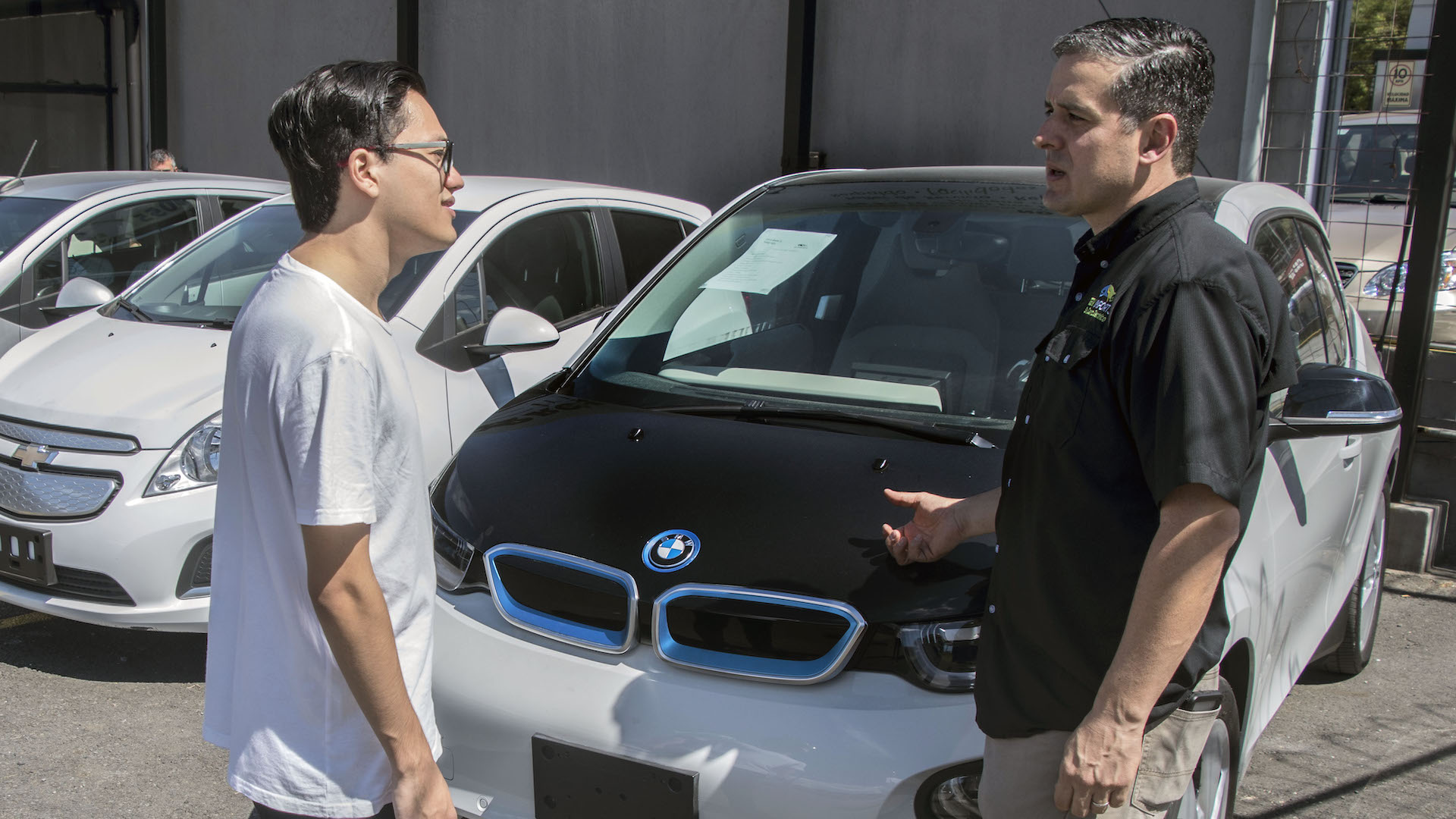

Prices for used electric vehicles have plummeted over the last year as the car industry seemingly catches up with demand. But while EVs now approach price parity with combustion-engined vehicles, they haven’t yet undercut them as cheaper alternatives.
The EV market has been unstable for more than a year now. The average price of a used EV was 60 percent higher than that of the average used car in October 2022, according to iSeeCars. Back then, your typical used EV cost $52,821, whereas the typical used car cost just $32,627.

But EVs have recently registered significant dropoffs in sales volume, with Tesla repeatedly lowering prices to stave off a sales slump, and the Porsche Taycan on track to lose sales volume for a second year running. This apparent demand dropoff has been attributed to emerging from the COVID lockdown era’s heightened pricing, confusing EV incentives, and market saturation—in other words, carmakers finally meeting EV demand. That would have a knock-on effect on the used market, as iSeeCars’ data suggests.
Using stats from 2.3 million sales of one- to five-year-old used cars, iSeeCars found that since October 2022, used car prices have declined by 5.1 percent on average, with hybrids outstripping them to dip 9.6 percent. But EVs? Down 33.7 percent, to an average price of $34,994. The rest of the market reportedly averages $30,972.
This drop in price isn’t the only way to gauge demand, though. Another important metric to consider is Market Day Supply, or how long a vehicle is expected to sit on the lot before selling. Last October, EVs reportedly had an MDS of 37.5, a below-average figure that indicates high demand and an easy sale.

By July however, EVs’ MDS had climbed to 92, which is considerably higher than average according to Laser Appraiser, though not quite don’t-touch territory for dealers. (The slowest-selling cars today can have an MDS in the hundreds.) EVs’ MDS today stands at 52.4, versus 49.2 for the average used car. Those are both within normal ranges for car sales.
An explanation for EVs’ still marginally longer MDS may be found within iSeeCars’ data for the 10 slowest-selling used cars, which heavy depreciators like Maseratis and Infinitis make up much of. But there are three EVs among them: the Ford F-150 Lightning, Kia EV6, and Polestar 2. The Ford and Kia sell for above the average price for a used EV, and remain in short supply in many markets with long waitlists. That means dealers can haggle for higher prices on them, justifying keeping them on the lot for longer.
But that leaves us to guess what’s pulling the average price in the opposite direction, one reason for which might be Tesla. It’s the biggest volume-seller in the EV market, and therefore has the biggest influence on market saturation. Tesla has repeatedly slashed prices to stay ahead of dipping demand, moving volume while directly depressing used prices. That may be why iSeeCars observes used Tesla prices falling so far as of late—used Model 3s are down almost $15,000, the Model S more than $18,500, and the Model X almost $22,000.

Of course, all used vehicles are selling more slowly, and at lower prices than they were a year ago because rebounding new car supply is alleviating some pressure on the used market. But new EV demand has also stalled lately, with signs pointing to the market entering a “chasm” and OEMs responding in kind by delaying EV production ramp-ups.
Despite all the talk of EVs replacing all other kinds of vehicles, they remain luxury goods for limited demographics of the car market at large. That could change as battery supply and charger availability increase, but whether Americans want to make the jump—or can afford to in the first place—will have the final say in where EV sales go from here.
Got a tip or question for the author? You can reach them here: james@thedrive.com